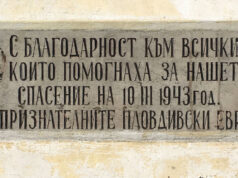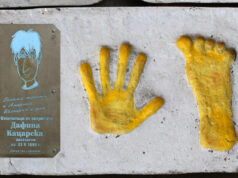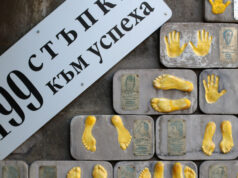![]() There is a street in the center of Sofia named for William Gladstone, the 19th century British politician. Why is it there? What did he do to distinguish himself in the eyes of Bulgarians? Ann Pottinger Saab’s Reluctant Icon: Gladstone, Bulgaria, and the Working Classes 1856-1878 opens a window into answers for these questions.
There is a street in the center of Sofia named for William Gladstone, the 19th century British politician. Why is it there? What did he do to distinguish himself in the eyes of Bulgarians? Ann Pottinger Saab’s Reluctant Icon: Gladstone, Bulgaria, and the Working Classes 1856-1878 opens a window into answers for these questions.
An academic study, the purpose of the book is to investigate the impact of the Bulgarian Agitation of 1876-78 as a social protest movement on both domestic policy in England and foreign policy abroad. As events in history, these were no small matter, involved hundreds of meetings, thousands of petitions and tens of thousands of participants between 1876 and 1878.
Saab employs Niel Smelser’s Theory of Collective Behavior as a hypothesis to organize her work. According to Smelser, collective behavior embodies three attributes: mobilization, specific belief, based on fact, but which takes on mythical qualities, and a non-institutionalized nature. The Bulgarian Agitation includes all three of these characteristics. In addition, there are six necessary factors to precipitate a movement, which can be generally described as (1) uncertain relationships among established institutions and groups, (2) structural strain due to evident hypocrisy, (3) generalized belief in a cause, (4) a precipitating factor, (5) the mobilization process and (6) an establishment response.
The opening chapter briefly introduces the topic and explains the methodology employed for the work. The second chapter is a survey of British-Ottoman relations from about 1830 up to the events of 1876-78, with an emphasis on the sources of strain between them. Saab explores both the geopolitical strategic and economic reasons for British support for the Ottoman Empire. Chapters three through nine explore the relevant history through the prism of Smelser’s six factors necessary for a movement to emerge. A short conclusion rounds out the book.
In her investigation of the case, Saab engages in detailed description of political events and relationships, particularly concerning Gladstone and his leadership role in the agitation. It is particularly noteworthy how Gladstone’s high moral principles led his actions. The apparent oppression of a Christian people was a popular disgust for a broad swath of the British populace, but for Gladstone, a committed Christian himself, it was not the only side to the issue. For him, it was a wake up call to correct an untenable social situation in the Balkans. Gladstone favored autonomy for local nations within the structure of the Porte. He was wise enough to value a slower, controlled breakdown of the Ottoman Empire, even if the end was ultimately inevitable.
Gladstone’s prominence in the Bulgarian Agitation helped to forge a new coalition of disparate groups within British politics. He returned to power as Prime Minister in the elections of 1880. Ultimately the European Powers were unable to effect a peaceful dissolution of the Ottoman Empire, but not for lack of trying. Gladstone’s ideas are evident in the treaties which followed the Russo-Turkish war and, though the twists and turns of history continued to bring surprises, his role was significant in the rise of Bulgaria as a modern state.
This book might be too detailed for the general reader, but anyone with more than a passing interest in either British history or the Bulgarian War of Liberation will be well rewarded for the effort. For a glimpse of actual press articles on the topic from February 1877, visit any of the following links:
Relieving the Distress in Bulgaria
Comment on a Parliamentary Notice
More Excerpts from The Graphic (February 17, 1877)
Images from The Graphic (February 17, 1877)
[amazonify]0674759656:right[/amazonify]Contents:
Acknowledgements
1. Introduction
2. The Crisis in the Ottoman Empire
3. British Ottoman Strain
4. Conflicting Visions of the State
5. Gladstone’s Pursuit of Singlemindedness
6. The First Stirrings of Protest
7. The Movement Matures
8. A Shift in Focus
9. War and Counterprotest
10. Conclusion
Notes
Index
Citation:
Saab, Ann Pottiger. Reluctant Icon: Gladstone, Bulgaria and the Working Classes 1856-1878. Harvard Historical Studies Number 109. Cambridge: Harvard University Press, 1991.











